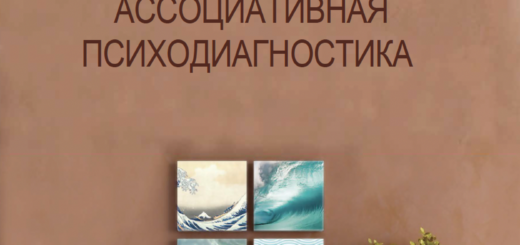TPE stands for Type of Psychic Energy.
“From the perspective of socionics, each person possesses one of sixteen types of information metabolism. If we consider information and energy as something mutually connected and one-piece, then it is possible to assume that man is also a carrier and the spokesman of psychic energy of a specific type.
The question is: what types of psychic energy (TPE) are considered in the associative model? The Butterfly model refers to the dynamic structure of psyche on the basis of compensation between the different types of psychic energy, which are associated with four components of the structure of the personality: with the Ego, Id, Superego and Superid. In order to understand what is meant by these terms, let us turn to the theories of the personality of Sigmund Freud and Carl Jung. Let us examine first the Ego, Id, and Superego, which are the components of the structure of personality in Freud’s theory…
The energy of the Id is transformed into the energy of the Ego under external influences by means of the realization of the surrounding reality and the necessity to comply with social norms. The Ego achieves rational control of all other parts of the personality. It is guided by the principle of reality. The Ego allows a person to distinguish between what is desired and what is possible, between the subjective and the objective, and so on. This part of the personality is not preoccupied with the moral side of things but pays attention to consequences for the person. The Ego searches for the right moment to satisfy the desires of the Id, taking into account the possible reactions of other people. Therefore, the Ego is compared with the rational judge, who makes plans and decisions about actions.” ….
When we refer to the notion of a balanced personality we mean a harmony between the opposites such as mind and heart, the soul and body. On the basis of the unity of opposites within the psyche, the author associates the types of psychic energy (TPE) with socionics’ functions and those in turn with the color of chakras. (9). As a result, the sixteen personality types were divided into four groups:
1.Ego-types – rational extroverts. Extroverted functions: Fe (red) and Te (orange).
2. Id-types – irrational extroverts. Extroverted functions: Se (yellow) and Ne (green).
3. Superid-types – irrational introverts. Introverted functions: Ni (blue) and Si (dark-blue).
4. Superego-types – rational introverts. Introverted functions: Ti (violet) and Fi (purple/pink).

Picture 1. Association between colors and functions in socionics.
Ego – quadra or the group of Ego-types include types of Hamlet (EIE), Hugo (ESE), Jack London (LIE) and Stirlitz (LSE). The circle of life continues into the Ego-period. When life is established it brings significant changes to the environment. Ego-types are hardworking leaders. Having charisma and organizational skills, they actively intervene in the vital processes and shape the world around them, adjusting it for yourself. During this period, there are conflicts, clashes, wars. As Alexander Blokwrote: “The whole life is fighting – we can only dream of the rest”. If we continue the analogy with nature, not everyone has his place under the sun. You have to fight for it. . Ego-types are ready to overcome serious obstacles to prove their right to lead people.They have everything it takes to win: power of emotions (Fe) and knowledge of the facts and objects, the objective laws (Te). This gives them the opportunity to successfully manipulate and modify objects surrounding them.
Ego-types are true born leaders. They are hard-working, possess great will power and intend to change the order of the surrounding environment at their sole discretion. As a rule, they are somewhat presumptuous and would not like to admit their weakness in public. It is important for them to have a goal and to feel that they are ready to deal with any obstacles in order to achieve that goal. Ego-types are real fighters, tending not to adjust to any existing frames but still controlling the circumstances and intentions of other people and delegating the situation to the right people in order to achieve the goal with mutual efforts. Ego-types would successfully manage other people, make decisions, take responsibility and not give up on failures. Such people, as a rule, are good at projecting an aura of confidence and giving the impression of a serious, business person.
Ego-types are open minded in their judgement, assertive in their work and oriented to the final result. The weak point of such people is their obsession with emotions or goals and tasks which they have initially set for themselves. They feel the need to finish the task that they have undertaken and bring it to a finish even when the situation had changed and there is no point in pursuing the goal further. These people take responsibility more than any other types of people. In the case of a goal not being reached due to some objective reason which did not depend on them, they may take it as their personal failure. Ego-types do not like unexpected changes and they may find it difficult to promptly react to any changes in the environment, changes to plans and moreover to re-view long-term goals. Steady, predictable situations and order throughout their personal and social lives is more beneficial to them.
Ego-types are the bright exponents of the ‘Ego’ psychic energy which according to the associative theory, is correlated with red and orange colour. Each mentioned colour endows the carrier of this type of energy with special characteristics.
Red colour –is hot and energetic, traditionally being associated with masculinity, fire and blood. Energy of red colour brings physical strength, courage and confidence to the person. Undoubtedly, this is the colour of the winner! In order to win, a person needs an impulse to action, integrity of personality and a high level of attractiveness. Red colour is like a magnet, attracting the attention and not leaving you at ease, keeping you in permanent tension, exciting you and charming you.
Orange colour – like red colour, carries an energetic charge inside, exciting and warming you up, invigorating the senses. Unlike the red colour, the orange one is more flashy and cheerful, symbolising sexuality and orientation for success.
Representatives: Miley Cyrus, Maria Callas, Goya Toledo, Michael Stipe, Geoffrey Rush, Benazir Bhutto, Adele, Diana Ross, Chuckle Barry and etc.

Example of Ego-energy and Ego- control over the environment.
The Jeremy Kyle Show: a dark and dangerous form of entertainment
Associative model Ольга Тангеманн 2009© Ассоциативная соционика











